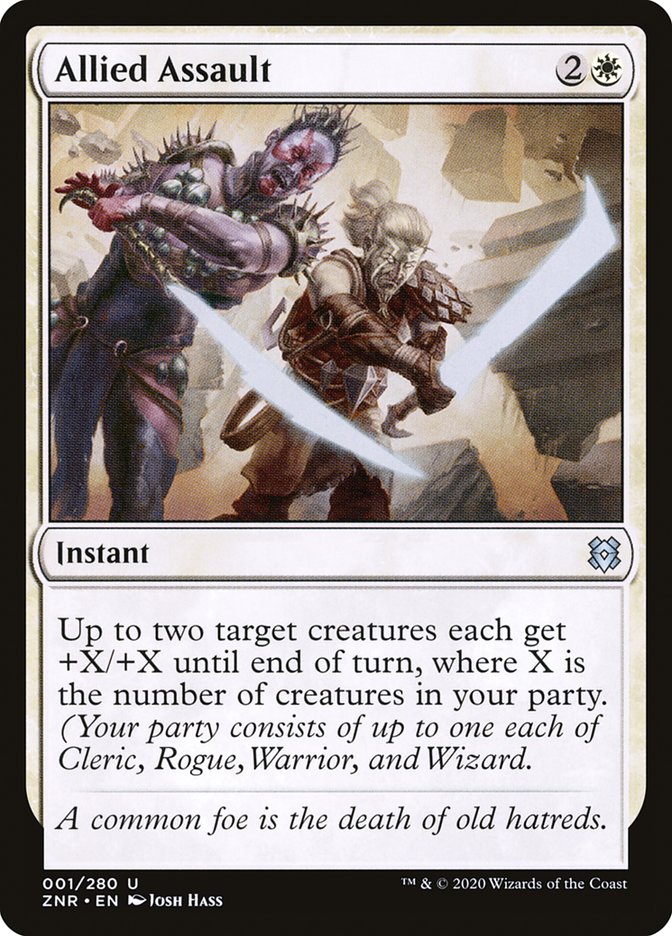
Allied Assault {2}{W}
Instant
Up to two target creatures each get +X/+X until end of turn, where X is the number of creatures in your party. (Your party consists of up to one each of Cleric, Rogue, Warrior, and Wizard.)
A common foe is the death of old hatreds.
Illustrated by Josh Hass
- Standard
- Not Legal
- Alchemy
- Not Legal
- Pioneer
- Legal
- Explorer
- Legal
- Modern
- Legal
- Historic
- Legal
- Legacy
- Legal
- Brawl
- Legal
- Vintage
- Legal
- Timeless
- Legal
- Commander
- Legal
- Pauper
- Not Legal
- Oathbreaker
- Legal
- Penny
- Not Legal
| Prints | USD | EUR | TIX |
|---|---|---|---|
| Zendikar Rising | $0.02 | €0.04 | 0.03 |
Unclosed Reminder Text
Allied Assault was printed without a close bracket at the end of its reminder text. For many of us a missing close bracket creates an unresolved tension, so as a public service, here is the end of the reminder text.)
Toolbox
Buy This Card
Notes and Rules Information for Allied Assault:
- The value of X is determined only as Allied Assault resolves. Once that happens, the value of X won’t change later in the turn even if the number of creatures in your party changes. (2020-09-25)
- To determine “the number of creatures in your party,” check whether you control a Cleric, whether you control a Rogue, whether you control a Warrior, and whether you control a Wizard. The number is the total number of those checks to which you answered yes. Each creature you control can be counted for only one of those checks. (2020-09-25)
- If a creature has more than one party creature type, and there are multiple ways to count that creature that could result in a different number of creatures in your party, the highest such number is used. For example, if you control a Cleric and a Cleric Wizard, the number of creatures in your party is two. You can’t choose to have it be just one by counting the Cleric Wizard first as a Cleric. (2020-09-25)
- An ability referring to the number of creatures in your party gets a number from zero to four. Such abilities never ask which creatures are in your party, and you never have to designate specific creatures as being in your party. You can’t choose to exclude creatures from this count to lower the number. (2020-09-25)